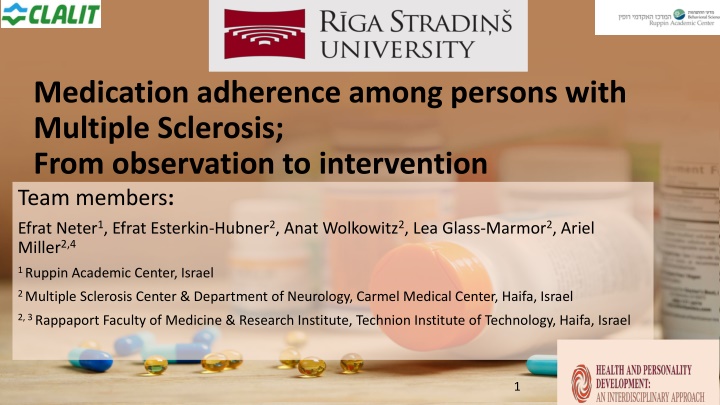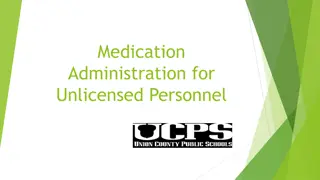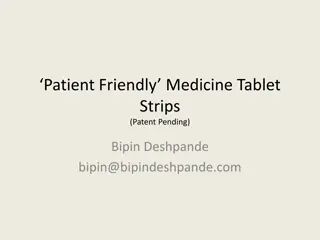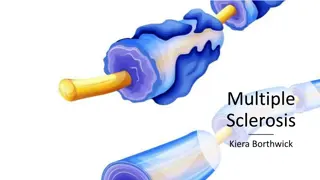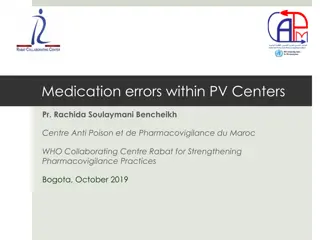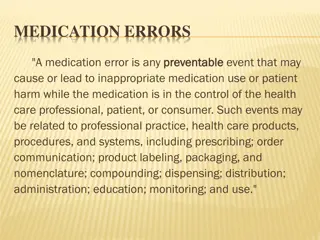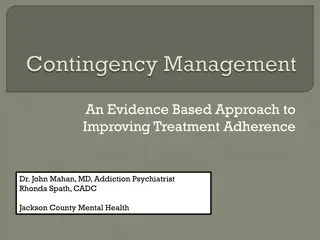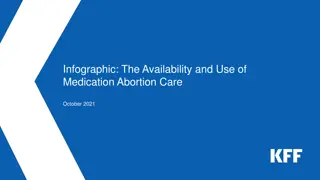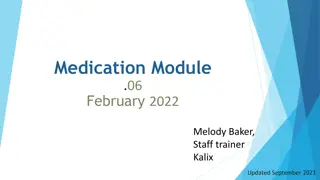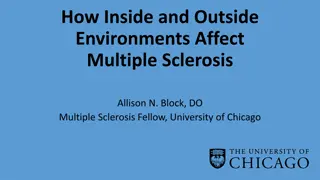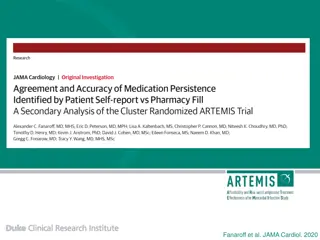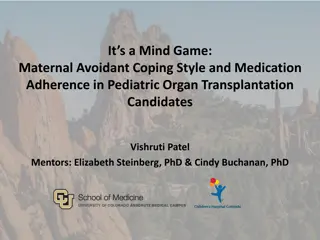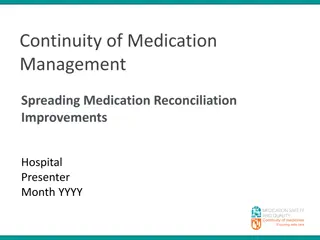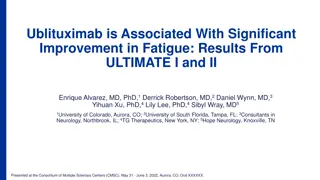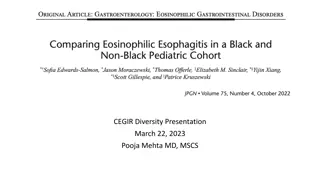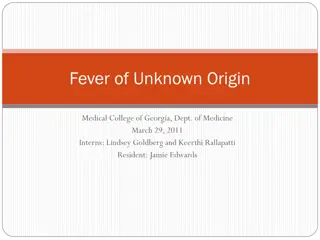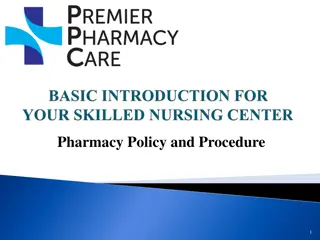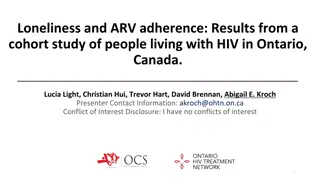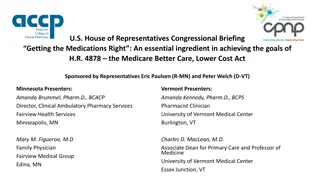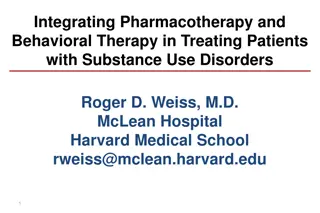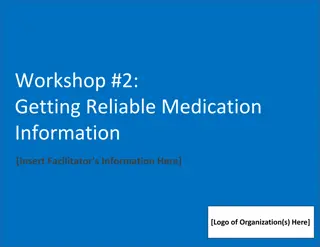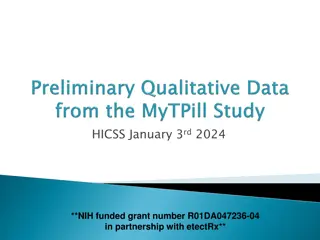Enhancing Medication Adherence in Multiple Sclerosis Patients
This study explores medication adherence among individuals with Multiple Sclerosis (MS), presenting insights from observation to intervention stages. It delves into the background of MS, adherence, Disease-Modifying Therapies (DMTs), and the challenges faced. The team identifies reasons for non-adherence and implements an intervention using the Intervention Mapping (IM) approach. The content emphasizes the importance of enhancing adherence to DMTs in individuals with relapsing-remitting MS to improve outcomes.
Download Presentation

Please find below an Image/Link to download the presentation.
The content on the website is provided AS IS for your information and personal use only. It may not be sold, licensed, or shared on other websites without obtaining consent from the author.If you encounter any issues during the download, it is possible that the publisher has removed the file from their server.
You are allowed to download the files provided on this website for personal or commercial use, subject to the condition that they are used lawfully. All files are the property of their respective owners.
The content on the website is provided AS IS for your information and personal use only. It may not be sold, licensed, or shared on other websites without obtaining consent from the author.
E N D
Presentation Transcript
Medication adherence among persons with Multiple Sclerosis; From observation to intervention Team members: Efrat Neter1, Efrat Esterkin-Hubner2, Anat Wolkowitz2, Lea Glass-Marmor2, Ariel Miller2,4 1 Ruppin Academic Center, Israel 2 Multiple Sclerosis Center & Department of Neurology, Carmel Medical Center, Haifa, Israel 2, 3 Rappaport Faculty of Medicine & Research Institute, Technion Institute of Technology, Haifa, Israel 1
Content Content from observation to intervention from observation to intervention Background What is MS? What is adherence? Disease-Modifying Therapies (DMTs) for persons with relapsing-remitting multiple sclerosis (PwRRMS); Advantages & challenges Observation stage: Adherence to DMT and reasons for non-adherence Identify useful/relevant theory Intervention stage: Description of Intervention Acceptability, Feasibility and Efficacy Intervention Mapping (IM) approach structured the process of design and implementation of intervention 2
Multiple sclerosis Multiple sclerosis A chronic autoimmune disease of the central nervous system characterized by inflammation, demyelination, and axonal degeneration. MS is a heterogeneous, multifactorial, immune-mediated disease that is caused by complex gene environment interactions. Several sub-types; heterogeneous clinical manifestations and course In most patients, reversible episodes of neurological deficits (known as relapses) that usually last for days or weeks characterize the initial phases of the disease (relapsing MS) Over time, the development of permanent neurological deficits and the progression of clinical disability become prominent Onset: 20-40 years old; ~0.1% prevalence (geography and latitude dependent) 4
Disease Modifying Treatments (DMTs) Disease Modifying Treatments (DMTs) Modify the course of MS through the immune system; available for people with relapsing-remitting multiple sclerosis (RRMS) Prescription by physicians is determined by: safety, efficacy, tolerability and QoL Currently many options Pharmacological effects, though, depend (also) on medication taking behavior 5
Advantages Advantages of of Disease Disease- -Modifying Therapies (DMT) Modifying Therapies (DMT) DMTs - currently a mainstay of treatment strategies to persons with RRMS (PwRRMS), Effective in terms of disease progression limit the number of relapses, prevent new lesion formation, decrease in neuropsychological issues, reduce the accumulation of disability slow progression of disease. Adherence to DMT associated with improved quality of life, fewer days of work loss, reduced hospitalizations, emergency visits, outpatient visits, reduced annual medical care costs at the societal level. Adherence especially important in a chronic condition, when disease onset is at an early age, requiring many years of treatment. 6
Challenges Challenges in Disease Disease- -Modifying Therapies (DMT) Modifying Therapies (DMT) Need for DMT not seem clear in times of disease inactivity or mild course (progression is unnoticeable to PwRRMS) Chronic symptoms are not reduced by DMTs (other/additional medications address them) Benefits of treatment only accrue long-term Adverse side effects are immediate in 7
Medication taking behavior Medication taking behavior - - Definitions Definitions Adherence - the extent of correspondence between medication taking behavior and the recommendations made by the provider with respect to timing, dosage, and frequency Persistence - staying on same medication/treatment. Switching moving between medications. 8
Adherence and persistence rates in MS Adherence and persistence rates in MS Recent meta-analysis (Nicholas et al., 2020) on oral DMT adherence: before one year of treatment, 20% of PwRRMS were not taking it as prescribed (i.e., non-adherence), one in four PwRRMS discontinued treatment (i.e., non-persistence. Rates of adherence to injectable DMT ranges 25-50% within 1-5 years. Reasons for non-adherence - WHO model. In MS, most studies focused on social-economic or therapy-related factor (e.g., administration modality) factors. Reasons were both intentional and non-intentional 9
Part II Observation 10
Intervention Mapping (IM) approach structures the road towards intervention Step Tasks Based on Establish the extent of the non-adherence; Identify behavioural and environmental determinants associated with the non-adherence Literature review; Longitudinal observational study investigating predictors of non-adherence 1 Needs Assessment Identify expected outcomes and performance objectives for intervention; Establish targeted behavioral determinants Needs Assessment (stage 1); 2 Perceptions and Practicalities Approach (PAPA); Identify Intervention Objectives 3 Select or design practical applications to deliver change methods; Select theory and evidence-based intervention methods based on pre-identified determinants Literature review; Perceptions and Practicalities Approach (PAPA); Necessity-Concerns Framework (NCF); Motivational interviewing Theory-based methods and practical strategies 4 Integrate these practical applications into an organized program; Establish the format of the intervention; Draft and refine materials (consult with intended users) Patients input; Clinicians; Research team Develop intervention Identify intended users/targets; Develop indicators and measures for assessment; Evaluation plan 5 Methods Implementation and evaluation plan 6 Results Implementation 11
Stage 1: Measuring adherence prospectively 1. Compared adherence rates by various measures/methods [electronic pharmacy records (MPR), patient- reported scales, and electronic medical device (EMD] across time two administration routes of DMTs oral and self-injected Patient-reported yielded the most variance; EMD failure (own device and pharma s). Moderate consistency across time (within-person): 84% agreement, Kappa=0.47, < 0.70 (=criteria in test-re-test) No difference across modalities Moderate-to-high % agreement between measures: 80% agreement (MPR & PRO, translating into Kappa=0.37) 2. Examine association between measures of adherence. 12
Stage 1: Measuring and predicting adherence prospectively key findings 1. Adherence range: 63 - 66% (depends on modality, brand, time) 2. Medication perceptions the consistent predictor of adherence (across times, modalities) 3. Within-person variability 13
) Stage 1: Key determinants of DMT non-adherence and non-persistence identified by the needs assessment Barriers/ Facilitators to DMT adherence/persistence Determinant Concerns, necessity, harm, overtreatment (Horne et al., 2013; Neter et al., 2021; Thach et al., 2017) Medication beliefs Side effects Main theoretical framework chosen: Perceptions and Practicalities Approach (PAPA) Reduced quality of life (Bruce & Lynch, 2011( Treatment satisfaction Thach et al., 2017; also, not MS-specific, Barbosa et al., 2012 Affective states High levels of anxiety and depression (Bruce et al., 2010; Neter et al., 2021; Schoor et al., 2019) Memory Bruce et al., 2010; Horne et al., 2019 MS knowledge, self- efficacy Conn & Ruppar, 2017; Costa et al., 2015 14
Perceptions and Practicalities Approach (PAPA): motivation and ability as core intrinsic attributes for adherence. Horne, R., Cooper, V., Wileman, V., & Chan, A. (2019). Supporting adherence to medicines for long-term conditions: A perceptions and practicalities approach based on an extended common-sense model. European Psychologist, 24(1), 82 96. https://doi.org/10.1027/1016- 9040/a000353 15
Perceptions and Practicalities Approach a detailed conceptual map of adherence. Horne, R., Cooper, V., Wileman, V., & Chan, A. (2019). Supporting adherence to medicines for long-term conditions: A perceptions and practicalities approach based on an extended common-sense model. European Psychologist, 24(1), 82 96. https://doi.org/10.1027/1016- 9040/a000353 16
) Stage 2: Identify Intervention Objectives The obvious: increase adherence. Target would depend on power and N. 17
) Stage 3: Select or design practical applications to deliver change methods Meta-analyses (Conn et al., 2016, 2017) recommendations: face-to-face interventions. Focus on behavioral strategies and less on knowledge and beliefs. Medication taking interventions among PwMS focused mostly on persistence or re-initiation, not on adherence. the reported interventions were tailored, using either digital tools or motivational interviewing (MI), delivered either via telephone or face-to-face. studies on adherence did not find the interventions efficacious or were very small (N). Decision: f2f Motivational interviewing; also include education component. 18
) Motivational interviewing Motivational interviewing a patient-centered, evidence-based psychological counseling method aimed at exploring and resolving ambivalent feelings and perceptions regarding behavior change. has grown in use across diverse health settings in order to support behavior change, including medication adherence, including among individuals with MS. 19
Part III Intervention 20
) Acceptability, Feasibility and initial efficacy study (a pilot) Carried among identified non-adherent individuals, designed as tailored to the specific reasons of non-adherence, aiming at empowering PwRRMS. RQs: 1. Did the developed intervention increased adherence? 2. If Yes , whether changes also took place in medication habit beliefs about medications. 21
Methods, Stages Methods, Stages 4 4 & & 5 5 Intervention development & implementation 22
) Participants Participants 1. All PwRRMS in an observational study (n=230) screened for eligibility. 230 screened 2. Enrolled if eligible and agreed. Eligibility criteria: being prescribed oral/injectable DMT (Fingolimod, Dimethyl Fumarate, Interferon beta-1a and Glatiramer Acetate, Teriflunomide) for > 6 months identification as non-adherent by self-reports or medication claims records. Exclusion criteria: discontinuation of the medication on which non-adherence was identified, being non-Hebrew speaking Decision to participate in the intervention was determined jointly by the PwRRMS and the attending physician. 91 PwRRSM were identified as eligible, 60 enrolled (Visit 1), 52 completed the intervention (Visit 2) and 46 also completed the 12-months follow-up. 91 eligible 62 consented, 60 enrolled 52 completed intervention 46 completed follow-up 23
) Design and Ethics Design and Ethics quasi-experimental pretest posttest and a follow-up assessment; assumed a moderate degree of recruitment consent and retention; Anticipating we may end up with 40 participants at follow-up, a power of 0.79 was estimated to be sufficient to identify a difference of 0.45 standard deviation (effect size) at a 0.05 significance level. IRB #NCT02488343; registration (ClinicalTrials.gov) IDCMC-14-0061-CTIL) 24
Procedure Procedure Telephone booster, Identification Visit 1, Baseline Visit 2, Reinforcement & conclusion of intervention, 6 months after baseline 7-10 days after baseline Education & Motivational interviewing. Psycho-education: Education carried out by the treating neurologist, Behavioral, utilizing Motivational Interviewing (MI), carried out by a health psychologist. Motivational interviewing. 25
Procedure Procedure educational educational content of intervention content of intervention Visit 1: the neurologist brief explanation on MS, review of the participant s medical status (show PwMS recent MRI), a review of scientific evidence supporting the benefits of specific medication taken by the participant (delayed progression of disability, reduced proliferation of lesions, sustained cognitive ability), a discussion of potential side effects with a focus on those experienced by the participant and strategies for reducing them. 26
Procedure Behavioral intervention Behavioral content of A pre-scheduled telephone booster, 7-10 days later. Missed doses analyzed, the importance of adherence and participant's self-efficacy were reinforced, the main behavioral change techniques (BCTs) agreed upon in the previous session (Visit 1) repeated. Median time 11 minutes. Visit #1, MI experiences of coping w/ MS, goals and hopes for life w/ MS, pros and cons for DMT use/non- use/partial use, cases of recent missed doses reviewed; potential strategies for medication adherence (e.g., participants identified personal high-risk situations of a missed dose); a behavioral analysis of a typical missed dose; coming up w/ ways of preventing circumstances leading to a missed dose. Median time 30 min. Visit #2, MI, ~20 min, ..... 27
) Materials Materials Main outcome: Medication adherence (ProMAS), assessed at baseline (Visit 1), 6 and 12 months after baseline. 18-item of adherence behaviors, (e.g., I have never changed my medicine use myself , When I am away from home, I occasionally do not take my medicines ). Internal reliabilities ? = 0.83, 0.82 and 0.83 at Visit 1, Visit 2, and follow-up, respectively. Expanded Disability Status Scale (EDSS) Other PPOs: medication habits, beliefs about medication, illness perceptions, affective states, and quality of life. Psychologist s perception of the importance the participant attached to medication adherence and perceived efficacy (importance and efficacy rulers within MI), ranging 1-10. Demographic details (age, sex, education, social-economic status, self-rated health), retrieved from the observational study. 28
Results, Stage Results, Stage 6 6 29
Participants Participants characteristics characteristics PwRRMS were predominantly women, Assessed their health as below average (Mean = 1.95 on a 5-point scale), Physical disability (EDSS) was relatively low-to-moderate (Mean=2.78, SD=1.99, Median=2.50, IQR=1.00 4.00). Mean MS duration 8.80 years. 30
Recruitment (acceptability) and retention in the intervention 91/230 identified, 62 consented, and 60 actually completed MI in first visit No difference between consenters and decliners in demographics and clinical characteristics N of sessions attended associated with low SES (more session low SES) affective states (more depression and anxiety), lower QoL, worse illness perceptions 31
Primary outcomes Primary outcomes: Self-reported medication adherence adherence Visit 1, Baseline Visit 2 (6 months after BL) Follow-up (12 months after BL) 10.69 (4.80) Mean (SD) 9.74 (4.35) 10.90 (4.67) Median 10 12 11 Paired comparisons using Wilcoxon Signed-Rank non- parametric test Non-significant effect, d=0.22 Significant effect, d=0.26 32
Auxiliary outcomes: medications habit and beliefs and rating of importance and efficacy Habit and beliefs: No significant differences were found between at Visit 1 and Visit 2 (P s > .05). Importance and efficacy rulers : Significant differences in between Visit 1 and phone booster; non-significant differences between Visit 1 and Visit 2 . 33
Conclusions Conclusions 34
Main findings Main findings and comparison with lit Intervention is feasible: 2/3 agreed, ~1/2 of those identified completed; more retention among the worse-off psychologically Need for psycho-social support evident. Efficacy: Adherence increased at 6 months, then reverted at 12 months ( triangle effect ). Needs augmentation/additional boosters; blended approach recommended Small effect size, congruent with meta-analysis results. 35
Strengths Strengths Tailored, personalized Tailored, personalized intervention to the specific participant, employing in-person sessions with 2 health professionals and demonstrating a commitment to extensive patient extensive patient- -provider communication communication Utilized an intervention mapping approach. PAP theoretical model. Long follow-up uncovered a fade-off. provider 36
Limitations Limitations Small Small sample size No control group (due to small N) Upscaling Upscaling could require structuring the intervention; less personal but maybe more digital tools Communication outside clinic was restricted by HMO; policies changed since COVID. EMA recommended EMA recommended, capturing times of need and provides options for prompts, just-in-time response to a decrease in medication adherence; could be integrated into patient support programs of pharma companies. Need to tailor intervention to decliners intervention to decliners. Qualitative work needed on reasons and needs. Intervention addressed only patient and therapy-related factors and not healthcare system and condition-related. 37
Personal Note: Long Road Work started 10 years ago IRB, registration, Still producing publications Satisfying contribution Neter, E. & Miller, A. (2023). Using an intervention mapping approach to improve adherence to Disease-Modifying Treatment in Multiple Sclerosis. International Journal of Multiple Sclerosis Care, 25 (5). doi: 10.7224/1537-2073.2022-018. Neter, E., Glass-Marmor, L., Wolkowitz, A., & Miller, A., (2022). Medication habits among persons with multiple sclerosis. Multiple Sclerosis and Related Disorders, 68, 104224.doi.org/10.1016/j.msard.2022.104224 Neter, E., Glass-Marmor, L., Haiien, L., & Miller, A. (2021). Concordance between persons with Multiple Sclerosis and physician on medication effect and health status. Patient Preference and Adherence, 15, 939-943.doi: 10.21203/rs.3.rs-45699/v2 Neter, E., Glass-Marmor, L., Wolkowitz, A., Lavi, I., & Miller, A. (2021). Beliefs about medication as predictors to medication adherence in a prospective cohort study among patients with Multiple Sclerosis. BMC Neurology, 21, 136. doi:10.21203/rs.3.rs-45699/v1. Neter, E., Wolkowitz, A., Glass-Marmor, L., Lavi, I., Ratzabi, S., Lejbkowicz, I., & Miller, A. (2020). Multiple modality approach to assess adherence to medications across time in Multiple Sclerosis. Multiple Sclerosis and Related Disorders, 40, 101951. doi: 10.1016/j.msard.2020.101951. 38
neter@ruppin.ac.il Thanks to our participants Thank you for listening. 39
Come to EHPS conference in Come to EHPS conference in Cascais, Portugal, Cascais, Portugal, September September 2 2- -6 6, , 2024 2024 40
WHO model of Medication adherence WHO model of Medication adherence Adherence is multi-factorial Examples to dimensions/factors: 1 - age, education, marital status, having kids. 2 access to care, out-of-pocket, 3 lack of symptoms, severity of symptoms, addiction 4 method of administration (pills/injections/..), time spent on trt, number of times/day, 5 self care/management skills, efficacy, emotions, perceptions .. 41
